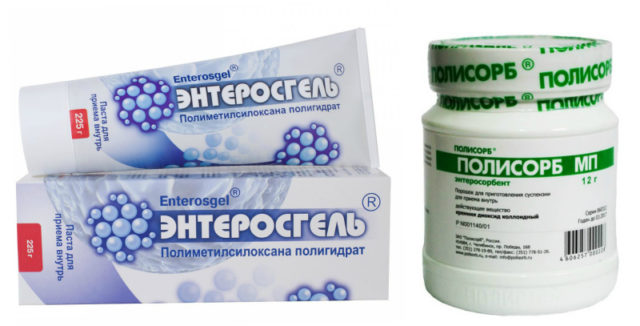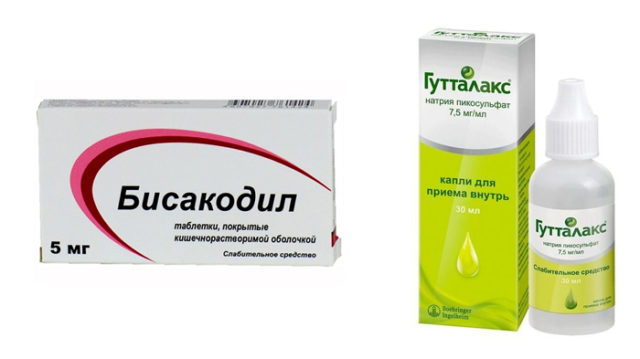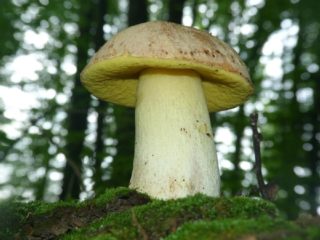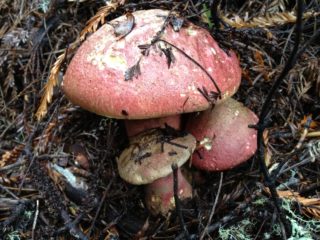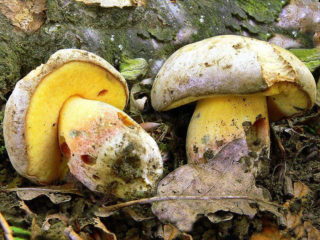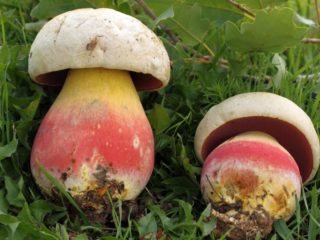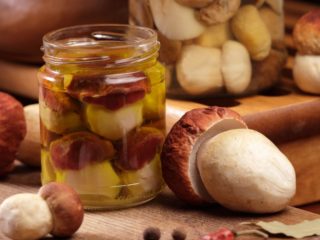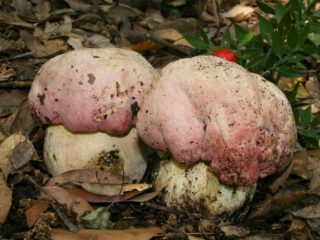Content
Boletus or pink-skinned boletus (Suillellus rhodoxanthus or Rubroboletus rhodoxanthus) is the name of one fungus of the genus Rubroboletus. It is rare, not fully understood. Belonged to the inedible and poisonous category.
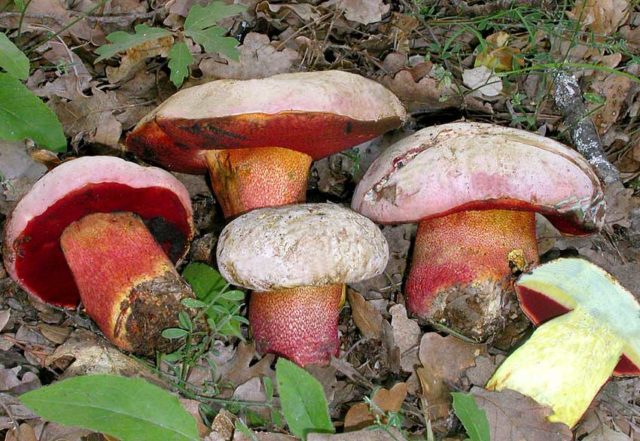
Boletus pink-skinned - a large species with a contrasting color
What pink-skinned boletus look like
Pink-skinned boletus is a rather spectacular and massive mushroom of autumn fruiting.
Hat appearance:
- It grows up to 20 cm in diameter. At the beginning of the development of the fruiting body, it is spherical with wavy or simply uneven edges. Then it acquires a cushion-like shape and opens up to prostrate with a slight depression in the central part.
- The protective film is smooth matt and dry at low humidity. After precipitation, the surface becomes sticky without mucous deposits.
- The color in young boletuses is dirty gray, then light brown, in mature fruit bodies it is brown-yellow with reddish or light pink patches along the edge and central part.
- The tubular hymenophore is bright yellow at the beginning of development, then yellow-green.
- Spores of young specimens do not differ in color with a tubular layer; as they mature, they turn red and stain the lower part of the fungus in a carmine or dark red color.
- The pulp is yellow-lemon near the cap and at the base of the stem, the middle part is paler in color. The structure is dense, only the upper part turns blue upon contact with air.
The leg of the boletus is thick, it grows up to 6 cm in width, the average length is 20 cm. In young mushrooms - in the form of a tuber or bulb, then the shape becomes cylindrical, thin at the base. The lower part of the leg is bright or dark red, the upper part is lemon or orange. The surface is covered with a convex looped and later dashed bright red mesh.
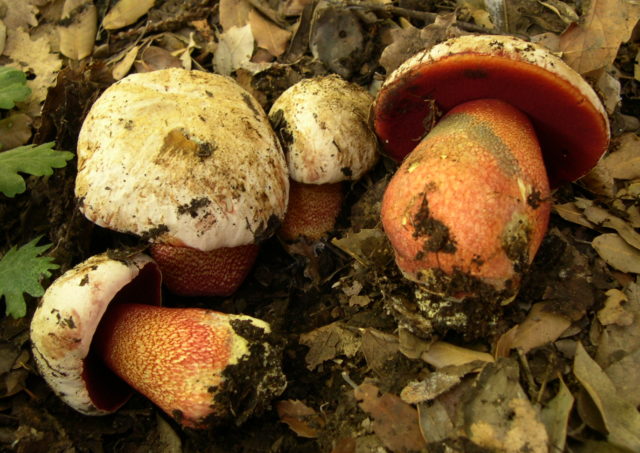
The smell of pink-skinned boletus is fruity-sour, the taste is pleasantly soft
Where pink-skinned boletus grow
The species grows only in warm climates, the main distribution area is the Mediterranean countries. In Russia, pink-skinned boletus are very rare. The main cluster is in the Krasnodar Territory and on the southern coast of the Crimean Peninsula. Borovik grows in light deciduous areas in open areas. Creates mycorrhiza with hazel, linden, hornbeam and oak. Fruiting in small colonies or singly from July to October on calcareous soils.
Is it possible to eat pink-skinned boletus
Due to its rare occurrence, the chemical composition of pink-skinned boletus has not been fully understood. The mushroom belongs to the inedible and poisonous group.
The degree of toxicity depends on the ecological state of the region and the place of growth of the species.
Poisoning symptoms
The first signs of pink-skinned boletus poisoning appear 2-4 hours after consumption. Symptoms are accompanied by:
- paroxysmal pain or cuts in the stomach and intestines;
- growing headache;
- nausea with intermittent vomiting;
- possible, but optional diarrhea;
- an increase or decrease in body temperature;
- in frequent cases, blood pressure drops.
Signs of pink-skinned boletus intoxication disappear after a few days. The main threat to the body is dehydration. In older people, toxins can cause all sorts of complications.
First aid for poisoning
Whatever the severity of the poisoning, at the first symptoms they seek qualified help at the nearest medical institution or call an ambulance. At home, help the victim to prevent the spread of toxins as follows:
- The stomach is washed with a weak solution of manganese. The water should be boiled warm light pink, with a volume of at least 1.5 liters. Divide the solution into five parts, give to drink at intervals of 11-15 minutes. After each intake, induce vomiting by pressing on the root of the tongue.
- They take adsorbent drugs that absorb and neutralize toxic compounds: enterosgel, polysorb, white or activated carbon.
- In the absence of diarrhea, it is artificially caused by irritating laxatives: guttalax or bisacodyl. If there are no drugs, they make an intestinal cleansing enema with warm boiled water with low concentration of manganese.
If there is no high temperature, a heating pad is placed on the legs and on the stomach. Hot chamomile broth or unsweetened tea is given to drink. In the case of a sharp drop in blood pressure, it is normalized with caffeine - this can be a strong cup of coffee or a citramone tablet.
Conclusion
Pink-skinned boletus is an inedible mushroom that contains toxic compounds. Cannot be eaten raw or hot processed. The species is rare, widespread on the Black Sea coast, mainly on the Crimean peninsula. Grows in open areas of deciduous forest in symbiosis with beech, hazel and linden.
